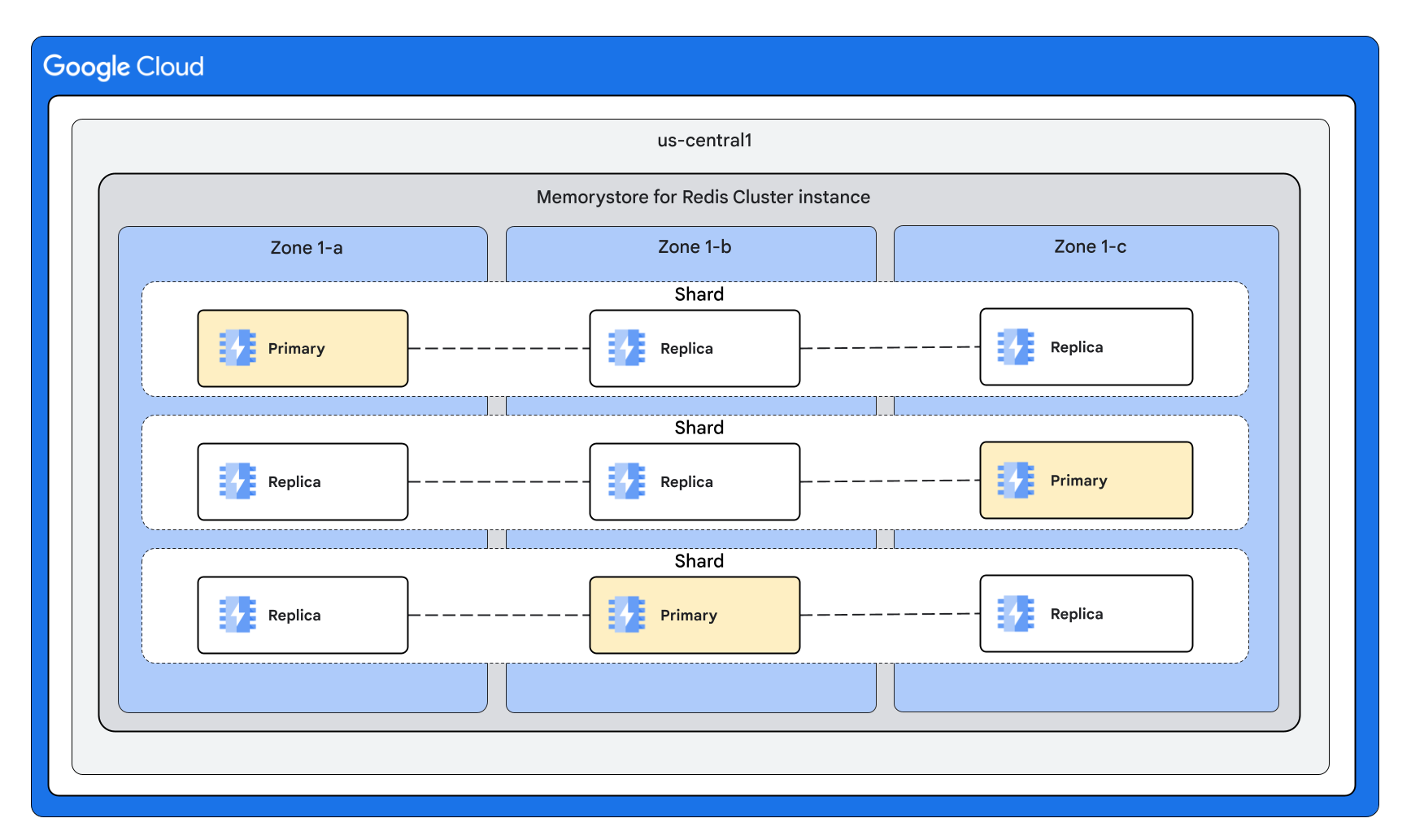Memorystore Cluster para Redis es un servicio de Redis completamente administrado para Google Cloud. Las aplicaciones que se ejecutan en Google Cloud pueden lograr un rendimiento extremo aprovechando el servicio de Redis altamente escalable, disponible y seguro sin la carga de administrar implementaciones complejas de Redis.
Conceptos y términos clave
Estructura jerárquica de recursos
Memorystore for Redis Cluster reúne los diversos recursos que se usan en una implementación de Redis en una estructura jerárquica que simplifica la administración. A continuación, se muestra un diagrama que ilustra esta estructura:

Las instancias de Memorystore for Redis Cluster se componen de un conjunto de fragmentos, cada uno de los cuales contiene un subconjunto de tu espacio de claves. Cada fragmento de un clúster de Memorystore se compone de un nodo principal y, de manera opcional, hasta cinco nodos de réplica. Cuando se agregan nodos de réplica, Memorystore distribuye automáticamente los nodos de un fragmento en las zonas para proporcionar mayor disponibilidad y capacidad de procesamiento.
Instancias
Una instancia de Memorystore for Redis Cluster es un contenedor para tus datos. Los términos instancia y clúster se pueden usar indistintamente cuando se hace referencia a una sola unidad de implementación de Memorystore for Redis Cluster. Cuando aprovisiones una instancia de Memorystore, debes aprovisionar suficientes fragmentos para atender el espacio de claves de toda tu aplicación.
Para obtener detalles sobre la especificación del clúster de Memorystore, consulta Especificación del clúster y el nodo.
Fragmentos
Tu clúster se compone de varios fragmentos del mismo tamaño. Para obtener detalles sobre la especificación de fragmentos de Memorystore, consulta Especificación de clústeres y nodos.
Nodos principales y de réplica
Hay un nodo principal por fragmento. Cada fragmento puede tener de 0 a 5 nodos de réplica. Las réplicas proporcionan alta disponibilidad y capacidad de procesamiento de lectura adicional, y se distribuyen de manera uniforme entre las zonas.
Para obtener más detalles, consulta Alta disponibilidad y réplicas.
Versión de Redis
Memorystore para Redis Cluster se basa en Redis versión 7.x de código abierto y admite un subconjunto de la biblioteca de comandos total de Redis.
Extremos del clúster
Cada instancia tiene un extremo de descubrimiento al que se conecta tu cliente. Tu cliente también usa el extremo de descubrimiento para el descubrimiento de nodos del clúster. Para obtener más información, consulta Extremos del clúster.
Requisitos previos de Herramientas de redes
Antes de crear una instancia de Memorystore para Redis Cluster, debes configurar la red para tu proyecto.
Facturación
Consulta la página Precios para obtener información sobre los precios en las regiones disponibles.

